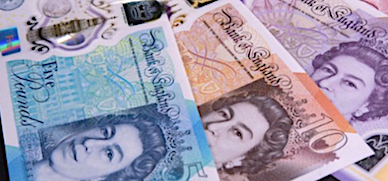UK government borrowing was £151.8 billion in the financial year ending (FYE) March 2022, with the UK public sector net debt excluding public sector banks (PSND ex) reaching £2.343 trillion, according to the UK’s Office for National Statistics (ONS).
The UK’s £2.343 trillion of debt is around 96.2% of GDP, an increase of £209.4 billion or 2.3 percentage points of GDP compared with March 2021, reaching levels not seen since the early 1960s.
The Office for Budget Responsibility said the year’s £151.8 billion borrowing was £24 billion above its March forecast.
“This surprise relative to forecast is largely due to higher-than-expected central government spending, which outweighed stronger-than-expected receipts,” said the OBR.
The ONS said: “Public sector net borrowing excluding public sector banks (PSNB ex) was £151.8 billion or around 6.4% of gross domestic product (GDP) in the financial year ending (FYE) March 2022; this was the third-highest financial year (FY) borrowing since records began in FYE March 1947, but less than half of the £317.6 billion borrowed in the same period last year …
“The public sector current budget deficit excluding public sector banks was £89.5 billion or around 3.8% of GDP in the FYE March 2022; this was the sixth-highest FY current budget deficit since records began in FYE March 1947, but around a third of the £245.8 billion deficit in the same period last year …
“Central government receipts were £830.0 billion in the FYE March 2022, £105.3 billion more than in the FYE March 2021, of which tax receipts were £619.9 billion, an increase of £94.3 billion …
“Central government current (or day-to-day) expenditure was £893.3 billion in the FYE March 2022, £50.3 billion less than in FYE March 2021, with a reduction of £67.4 billion in subsidies being partially offset by a £30.5 billion increase in debt interest payments …
“PSNB ex was £18.1 billion in March 2022, the second-highest March borrowing since monthly records began in 1993; this was £8.8 billion less than in March 2021 but still £11.9 billion more than in March 2020.”
AJ Bell financial analyst Danni Hewson said: “This is a real glass half full moment for the UK economy. The phasing out of covid restrictions and the end of support measures like the furlough scheme have helped the country surge back to its feet.
“The amount of cash being raked in from taxes has bounced back at a faster rate than had been expected, though there is a slight caveat here as inflation has surely played a significant part.
“VAT receipts are up by £25bn and those soaring prices at the pump along with the restart of the ‘big commute’ has netted an extra £5bn in fuel duty.
“However, that doesn’t minimise the £22.5bn in extra PAYE or £6.8bn from self-assessment payments.
“Cash is coming in fast just not fast enough to keep up with continued demands on the public purse and the difference in numbers between what the OBR forecast just last month, and the numbers offered up today just shows what a tightrope the Chancellor is having to walk.
“He might have had to find £64bn less for subsidies in the last year but that’s been offset by rising debt interest payments which came in at the highest full year valuation on record.
“Rising inflation will only serve to exacerbate the situation and whilst many people are calling for extra help now as vulnerable households struggle to make ends meet, Rishi Sunak will also be considering the legacy he will leave for future generations.
“Whilst borrowing in March was significantly down on the same period last year it was still almost £12bn above what was needed pre-pandemic, the second highest on record for the month and up on the amount borrowed just the month before – the government is not immune to those rising prices affecting households and businesses.
“How will the next few months play out, how will rising prices further impact the shape of the UK economy? Will investment be curtailed, put off until the numbers look more favourable? How full will the glass remain?”
